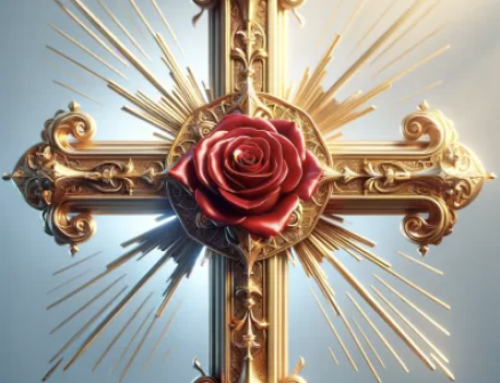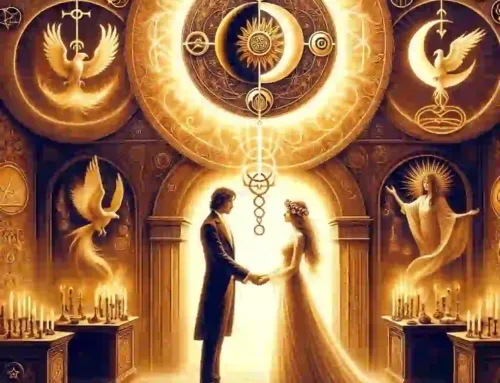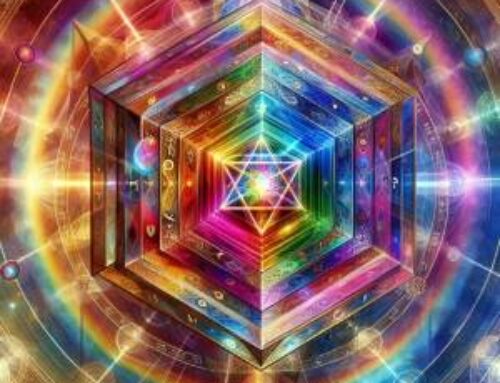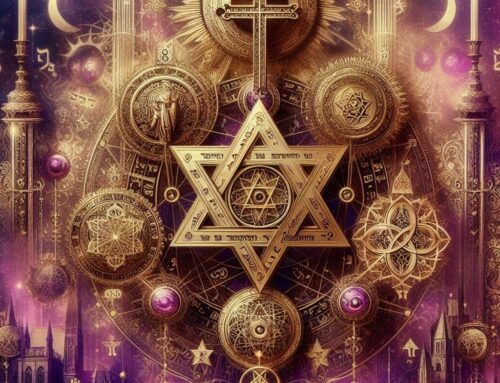Contents
- 1 Introduction to “Illuminati Rosicrucian”
- 2 Illuminati Rosicrucian – Historical Overview of the Rosicrucians and the Illuminati
- 3 The Core Beliefs and Objectives of the Rosicrucians
- 4 Misconceptions and the Truth About the Illuminati’s Existence
- 5 Rosicrucian Symbols and Their Meanings
- 6 The Influence of Rosicrucianism in Modern Spirituality
- 7 Distinguishing the Rosicrucians from the Illuminati: A Clarification
- 8 Conclusion of “Illuminati Rosicrucian”: Illuminating the Path Forward
- 9 FAQ – Illuminati Rosicrucian
- 10 References:
Introduction to “Illuminati Rosicrucian”
Illuminati Rosicrucian beliefs are thought to influence various forms of esoteric thought and practice. In the labyrinth of mystical orders and secret societies, the Rosicrucians and the Illuminati often emerge intertwined in public imagination, shrouded in mystery and speculation. Yet, understanding the distinct paths and purposes of these groups reveals a fascinating narrative of spiritual evolution and the human quest for knowledge. The Rosicrucians, with their rich heritage rooted in esoteric Christianity, alchemy, and Kabbalah, aimed at spiritual enlightenment and the betterment of society through an understanding of nature’s hidden laws. Their symbols, laden with deep meaning, continue to inspire seekers of wisdom today.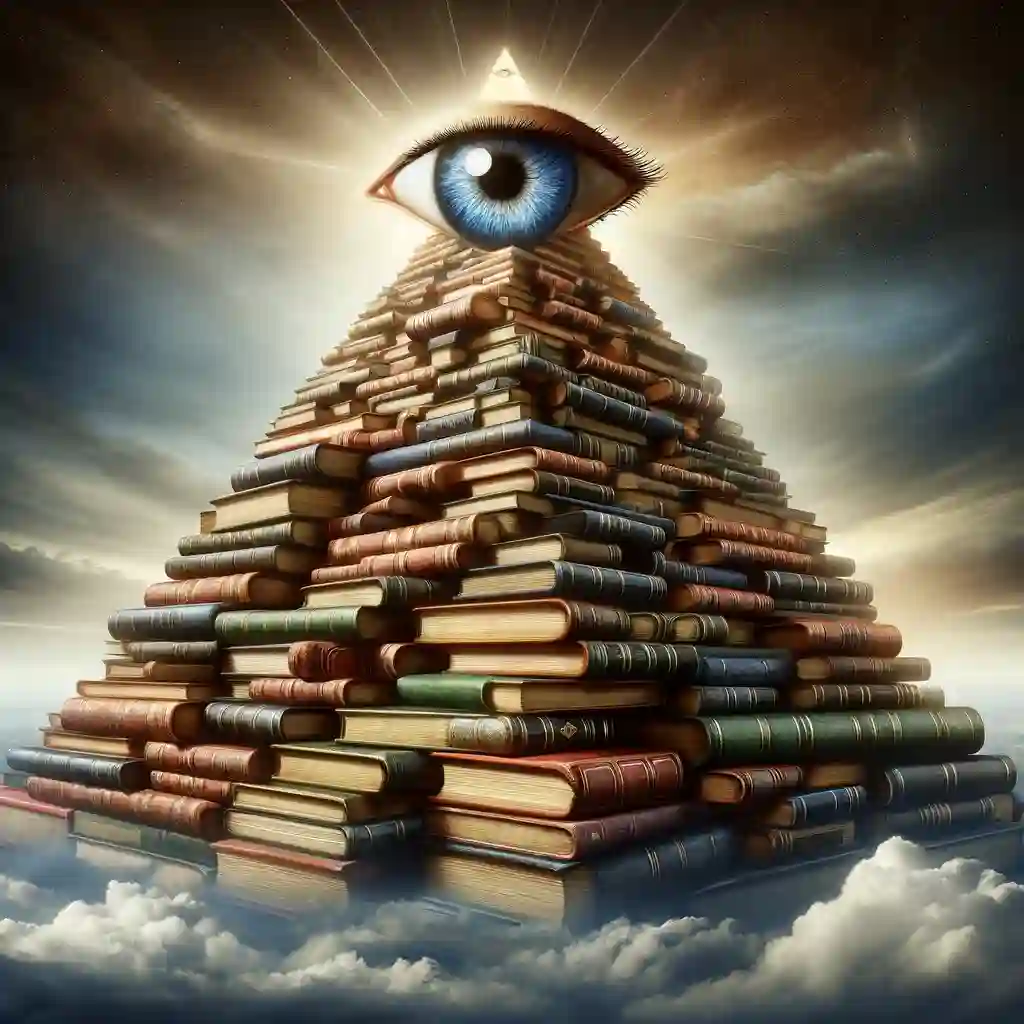
Conversely, the Illuminati, originating as a German and Austrian Masonic-style organization, represented a fleeting yet potent force in the socio-political landscape of the 18th century. Despite their brief existence, the myths surrounding their ambition for global domination persist, often overshadowing their actual historical impact. It’s crucial to demarcate the Rosicrucians’ pursuit of mystical enlightenment from the political maneuverings of the Illuminati. By clarifying these distinctions, we can appreciate the Rosicrucians’ enduring legacy and dispel the shadows cast by misconceptions about the Illuminati, an organization that no longer exists in the form sensationalized by popular culture. This exploration invites us to look beyond the veil of secrecy and into the heart of what truly motivates the quest for spiritual knowledge and transformation.
Illuminati Rosicrucian – Historical Overview of the Rosicrucians and the Illuminati
The term “Illuminati Rosicrucian” is often used to describe the rumored collaborations and shared ideologies between these two secretive organizations.
The Illuminati Rosicrucian legacy is often associated with secret knowledge and hidden societies. The narrative of the Rosicrucians and the Illuminati (“Illuminati Rosicrucian”) is a tale of two distinct paths within the realm of esoteric traditions and secret societies, each emerging from different epochs and with differing objectives.
The Dawn of the Rosicrucians
The Rosicrucian Order is one of the earliest and most influential spiritual traditions. Rooted in a rich tapestry of mystical Christianity, alchemy, and Kabbalistic wisdom, the Rosicrucians sought to understand the universe’s hidden laws and use this knowledge to foster spiritual enlightenment and societal advancement. Unlike many later esoteric groups, their work was deeply intertwined with the philosophical, spiritual, and healing arts, aiming to illuminate the path toward inner transformation and enlightenment.
The Illuminati: A Brief Enlightenment Era Phenomenon
The Illuminati was founded in 1776 by Adam Weishaupt in Bavaria, Germany. This organization, though influenced by Enlightenment ideals, sought to promote secularism and rational thought, challenging the prevailing religious and governmental structures. Their goal was to create a society where reason and science prevailed, free from the superstitions that dominated the era. Unlike the enduring Rosicrucian tradition, the Illuminati was short-lived, disbanded by government edicts in the late 18th century.
Distinct Paths with Different Goals
While the Rosicrucians have been a continuous presence in the spiritual landscape, contributing to the evolution of Western mysticism, the Illuminati’s existence was a brief, though influential, chapter in the history of secret societies. Their contrasting goals—one seeking spiritual enlightenment and the other societal reform—highlight the diversity within the world of esoteric and philosophical movements.
The Core Beliefs and Objectives of the Rosicrucians
The Rosicrucians stand as a beacon of spiritual wisdom, advocating for an enlightened understanding of the cosmos and the individual’s role within it.
A Foundation in Mystical Christianity
At the heart of Rosicrucianism is a profound connection to mystical Christianity. This connection is not merely religious but deeply spiritual, emphasizing personal inner experience and the pursuit of universal truths through symbols, allegories, and direct mystical insights. Rosicrucians believe in the power of transformation—both of the self and the world—through the principles of love, light, and life.
Alchemy and Kabbalah: Tools for Transformation
Alchemy and Kabbalah serve as pivotal tools in the Rosicrucian quest for knowledge. Alchemy is not just about the transmutation of base metals into gold but symbolizes the transformation of the human soul from a state of base consciousness to spiritual enlightenment. Similarly, Kabbalistic teachings offer a mystical framework for understanding the universe and achieving personal transformation.
The Rosicrucian Objective: Enlightenment and Healing
The ultimate objective of the Rosicrucian Order is the enlightenment and healing of individuals and, by extension, society. This is achieved through education, meditation, and the practice of rituals designed to awaken higher states of consciousness. Rosicrucians engage in studies that span philosophy, science, and spirituality, aiming to bring about a harmonious balance between the material and spiritual worlds.
Misconceptions and the Truth About the Illuminati’s Existence
The Illuminati, often shrouded in mystery and conspiracy theories, have been a source of fascination and misinformation. It’s essential to separate fact from fiction to understand their true place in history.
The Foundation and Rapid Dissolution
Founded in the Enlightenment era, the Illuminati’s mission was to advocate for secularism and reason in an age dominated by religious and royal authority. Despite popular belief, their influence was more intellectual and less about global domination. The organization was quickly suppressed by government forces, effectively disbanding by the end of the 18th century.
Conspiracy Theories vs. Historical Reality
The myth of the Illuminati’s continued existence and their supposed control over global events is a far cry from the historical reality. These conspiracy theories lack substantial evidence and distract from the Illuminati’s actual Enlightenment-era objectives.
Separating Fact from Fiction
Understanding the Illuminati requires a discerning look at historical records, separating sensationalized fiction from their true aspirations. Their goal was enlightenment—of thought, governance, and society—not the shadowy global dominance often depicted in popular media.
These overviews provide a clearer picture of the Rosicrucians’ enduring spiritual journey and the Illuminati’s brief yet impactful existence, emphasizing their distinct paths and contributions to the tapestry of human thought and spirituality.
Rosicrucian Symbols and Their Meanings
The Cross and the Rose
At the heart of Rosicrucian symbolism lies the Rose Cross, an emblem blending the starkness of the cross with the blossoming beauty of the rose. This symbol, deeply ingrained in Rosicrucian lore, represents the harmonious balance between earthly suffering (the cross) and spiritual enlightenment (the rose). The cross is a universal symbol of sacrifice and salvation, while the rose, with its layers of petals, symbolizes the unfolding of spiritual consciousness and the awakening of the soul’s inherent beauty. Together, they encapsulate the Rosicrucian path of transformation through knowledge and spirituality.
The Golden and Rosy Cross
Another pivotal symbol is the Golden and Rosy Cross, which further embodies the Rosicrucian ideals of enlightenment, alchemical transformation, and the mystical union between the material and the divine. Gold, representing purity, perfection, and the philosopher’s stone, symbolizes the ultimate goal of alchemical and spiritual processes—transmutation of the base into the noble. The rosy cross, placed within the context of gold, signifies the pursuit of wisdom and truth beyond the material realm.
The Symbolic Language of Rosicrucianism
Rosicrucian symbols are not mere artistic expressions but a language conveying profound spiritual truths and philosophies. They serve as keys to unlocking the mysteries of the universe and the self, guiding the initiate through the complex journey of self-discovery and cosmic understanding. These symbols, rich in meaning and steeped in ancient wisdom, continue to inspire and enlighten those who seek to tread the mystical path of the Rosicrucians (1).
The Influence of Rosicrucianism in Modern Spirituality
Bridging the Ancient and the Modern
Rosicrucianism has significantly influenced the contours of modern spirituality. By integrating ancient wisdom with contemporary spiritual practices, Rosicrucianism offers a unique bridge between the past and the present, catering to the spiritual seeker’s quest for timeless knowledge in a modern context. This blending of ancient traditions with the needs of today’s spiritual landscape demonstrates the enduring relevance of Rosicrucian principles.
Occult traditions always also shape the development of modern spirituality, science and culture (2).
Rosicrucianism and Contemporary Thought
The impact of Rosicrucian thought on modern spirituality can be seen in the widespread interest in mysticism, metaphysics, and esoteric knowledge. Concepts such as the universal laws, the power of visualization, and the importance of inner harmony have been popularized, in part, due to Rosicrucian philosophy. These ideas resonate with many seeking deeper spiritual engagement in a rapidly changing world.
A Living Tradition
Far from being a relic of the past, Rosicrucianism remains a living tradition that continues to evolve and adapt. Through its teachings, literature, and practices, it fosters a holistic approach to spirituality that emphasizes personal growth, understanding of natural laws, and the development of intuitive faculties. As a result, Rosicrucianism not only survives in the modern era but thrives, contributing to the rich tapestry of contemporary spiritual exploration.
Distinguishing the Rosicrucians from the Illuminati: A Clarification
Origins and Objectives
While the Rosicrucians focusing on mystical enlightenment and spiritual wisdom, the Illuminati, established in the 18th century, had a more temporal aim centered around enlightenment ideals and societal reform. Understanding these foundational differences is key to recognizing the distinct paths each movement followed.
Philosophical Differences
The Rosicrucians’ commitment to mystical and spiritual development contrasts sharply with the Illuminati’s focus on intellectual enlightenment and political influence. This distinction highlights the divergent objectives that motivated each group, with the Rosicrucians pursuing inner transformation and the Illuminati advocating for external societal change.
Some esoteric societies aim not only to achieve spiritual or mystical goals, but also to influence social structures and political landscapes (3).
Clarifying Misconceptions
In the maze of historical myths and modern fabrications, it’s essential to clarify the relationship—or lack thereof—between the Rosicrucians and the Illuminati. By examining their origins, goals, and influences, one can appreciate the unique contributions of each to the spiritual and intellectual history of humanity without conflating their distinct legacies. This distinction not only honors the truth of their histories but also allows for a deeper understanding of their impact on contemporary spiritual and philosophical thought.
Conclusion of “Illuminati Rosicrucian”: Illuminating the Path Forward
As we conclude our journey through the enigmatic realms of the Rosicrucians and the Illuminati (“Illuminati Rosicrucian”), we find ourselves enriched with a deeper understanding of these complex entities and the distinct roles they have played in the tapestry of human spiritual and philosophical evolution. The Rosicrucians have offered seekers a path toward enlightenment through a profound connection with the mysteries of the universe, marked by a rich symbolic language and a commitment to the betterment of humanity. On the other hand, the Illuminati, a product of Enlightenment-era thought, briefly illuminated the European socio-political landscape with its ideals of reason and liberty, despite being shrouded in myth and controversy.
Through dispelling myths and illuminating truths, we have endeavored to separate the intertwined narratives of these groups, revealing the unique contribution of the Rosicrucians to spiritual knowledge and esoteric traditions. Their enduring legacy, marked by symbols that carry profound metaphysical meanings, continues to inspire those on the quest for wisdom and personal transformation.
Call to Action: Journey Deeper with the Hermetic Academy
In traversing the landscapes of the Rosicrucians and the Illuminati (“Illuminati Rosicrucian”), we have uncovered a world rich in mystery, wisdom, and spiritual depth. The paths they chart, though distinct, offer us a mirror to our quest for knowledge, understanding, and spiritual growth. For those inspired by this exploration, the Hermetic Academy extends an invitation to delve deeper into the esoteric traditions that have shaped human thought and spiritual practice for centuries.
Joining the Hermetic Academy offers not just a continuation of this journey but a deep dive into the living traditions of Hermeticism, Rosicrucian wisdom, and beyond. It is an opportunity to connect with a community of like-minded seekers, to explore the mysteries of the universe, and to embark on a personal path of transformation. Here, amidst the symbols, rituals, initiations, and teachings that have guided countless seekers before us, lies the potential for profound personal and collective evolution.
Whether your interest lies in unraveling the mysteries of the Rosicrucians, understanding the historical truths of the Illuminati (“Illuminati Rosicrucian”), or seeking a deeper spiritual practice, the Hermetic Academy welcomes you. Let us continue the journey together, exploring the depths of ancient wisdom and its relevance in our modern world, for in the pursuit of knowledge lies the key to transformation.
FAQ – Illuminati Rosicrucian
Members of the Illuminati Rosicrucian order are said to seek a deeper understanding of universal truths. While both sought to influence society, their goals differed significantly. The Rosicrucians focused on spiritual enlightenment and the betterment of humanity through esoteric knowledge, whereas the Illuminati, with its roots in the Enlightenment, aimed at political and social reform.
2. Are the Illuminati still active today?
The original Bavarian Illuminati disbanded in the late 18th century. However, the name has been adopted by various groups over the years, often surrounded by myth and speculation.
3. What role do symbols play in Rosicrucianism?
Symbols are central to Rosicrucianism, serving as profound expressions of spiritual truths and metaphysical principles, guiding seekers toward deeper understanding and enlightenment.
4. Can one distinguish between Rosicrucian and Illuminati symbols?
Yes, while both use symbolic language, Rosicrucian symbols are deeply rooted in spiritual, alchemical, and mystical traditions, whereas Illuminati symbols are more closely associated with enlightenment-era ideals of reason and liberty.
References:
(1) Rubenstein, E. (2023). Magic: The Legacy of the Rosicrucians. Hermetic World, Paphos.
(2) Laqueur, T. (2006). Why the margins matter: occultism and the making of modernity. Modern Intellectual History, 3, 111 – 135. https://doi.org/10.1017/S1479244305000648.
(3) Urban, H. (1997). Elitism and Esotericism: Strategies of Secrecy and Power in South Indian Tantra and French Freemasonry. Numen, 44, 1-38.
https://doi.org/10.1163/1568527972629894.

